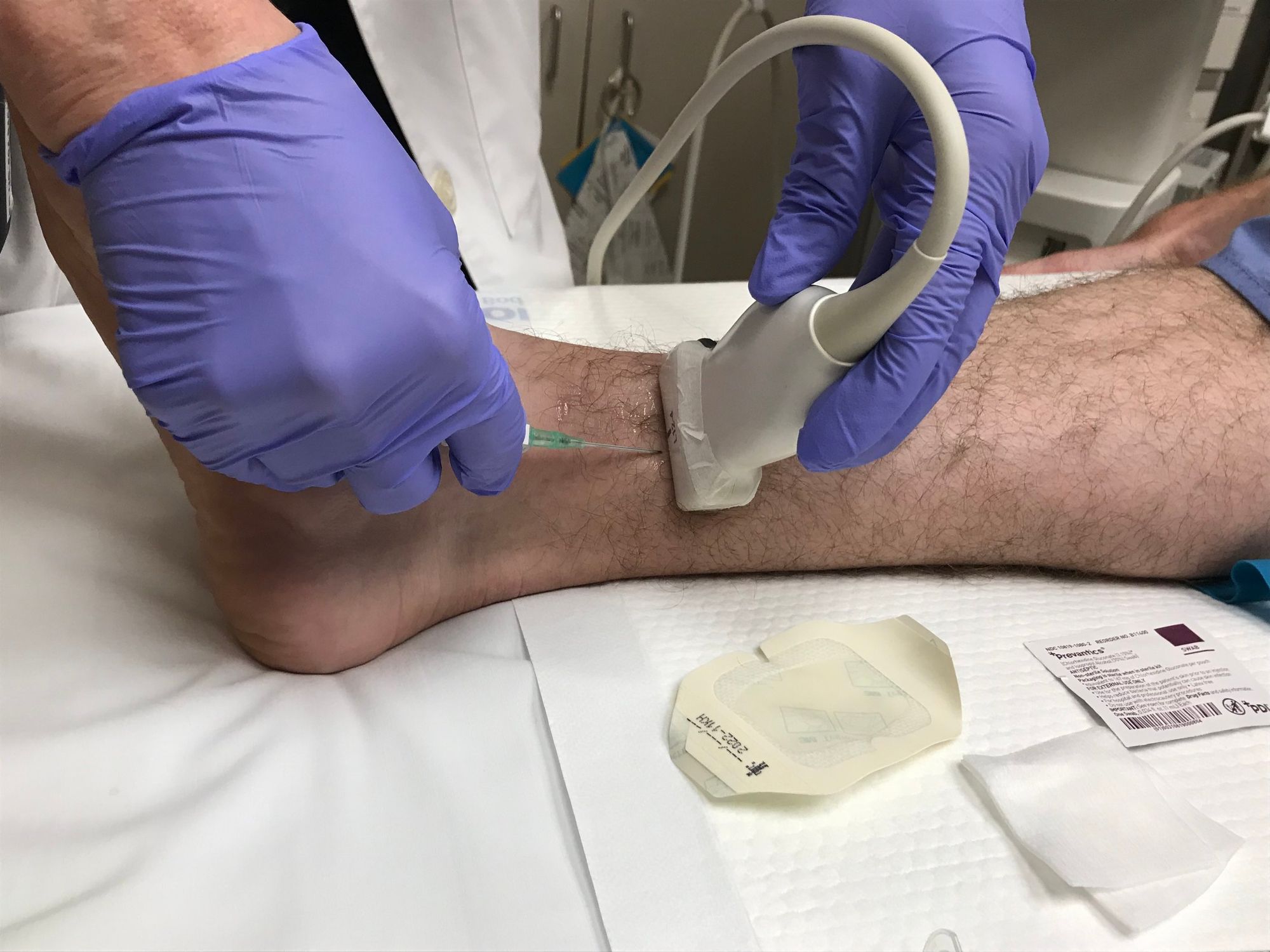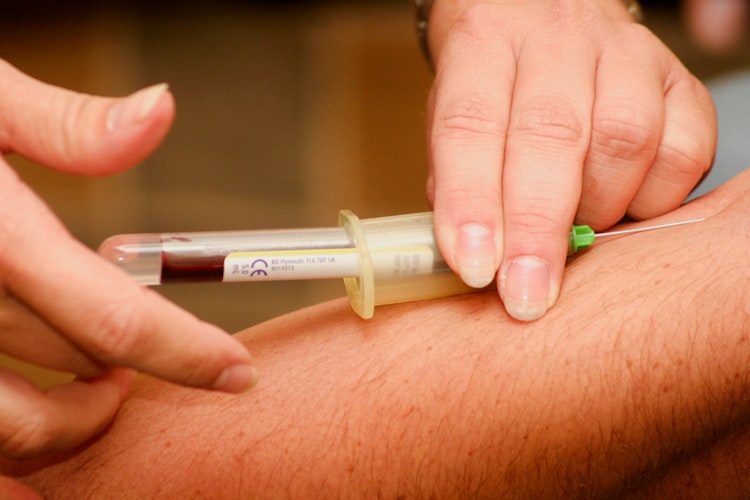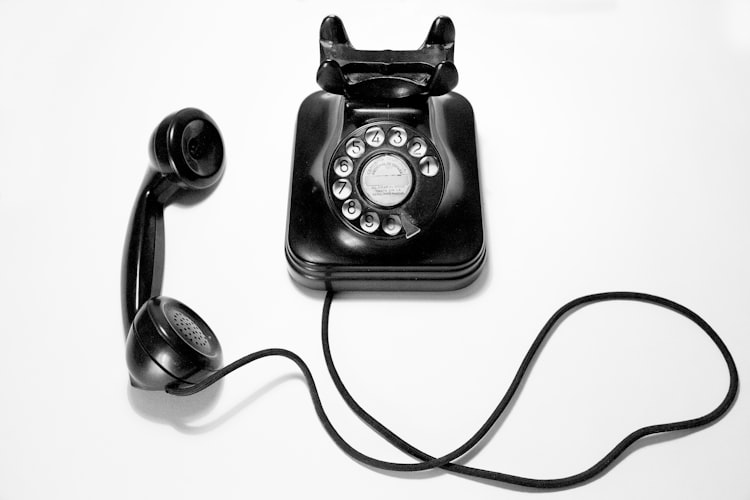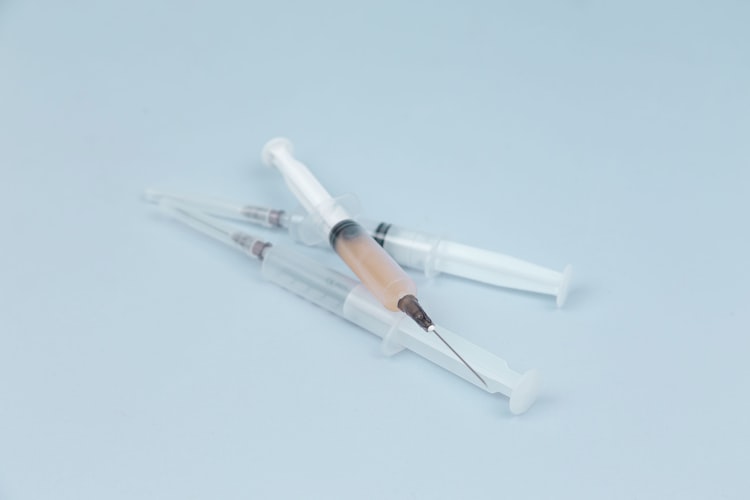Ultrasound-Guided Cannulation
If at first you don't succeed... cheat by using an ultrasound machine.

Steps
1) Determine whether using an ultrasound is indicated or whether simple cannulation can be performed.
Indications for ultrasound guidance include:
- Failed attempt/s without ultrasound guidance
- Difficult vascular access:
- No palpable veins
- Peripheral vasoconstriction (e.g. 2° to hypovolaemic shock)
- Obese patient
2) Collect equipment.
- Usual cannulation equipment
- Bluey
- Tray
- Non-sterile gloves
- Torniquet
- Cleaning swabs (x4-10)
- Long cannula (x2)
- Other equipment for obtaining blood (if indicated)
- 10mL saline flush
- IV cannula dressing (Tegaderm)
- Gauze/dot (for if you fail)
- Ultrasound machine
- Ultrasound probe cover (or sterile/non-sterile glove if probe cover not available) + rubber band
- Sterile ultrasound gel
- Paper towel to clean gel afterwards
3) Consent patient.
4) Set up environment.
- Turn light on (if off).
- Adjust bed to correct height (and/or get a chair).
- Place ultrasound machine on the opposite side of the bed to you and turn it on and set it up.
- Ensure you're using the high frequency, linear array probe (not the curved one and not the small square one)
- Ensure you've got the correct probe option selected on the screen
- Don't put depth to > 1.9 cm
- Ensure attenuation/gain (echogenicity) is set appropriately
- Black = anechoic (this is what the lumen of the vein should look like)
- Light grey = hypoechoic
- White = hyperechoic (this is what the tip of the needle should look like)
- You want the patient's arm and the ultrasound screen to be in a straight line so you don't have to turn your head excessively
- Sanitise hands (recall 5 moments of hand hygiene).
- Put bluey down under patient’s arm.
- Position patient’s arm.
5) Prepare to insert cannula.
- Sanitise hands.
- Put on non-sterile gloves.
- Put ultrasound gel on inside of probe cover.
- Put probe cover on ultrasound probe + tie it using rubber band.
- Squirt a bit more gel on the patient's arm at the site where you will search for a vein.
- Apply torniquet.
- Open cannula packet but leave it inside.
- Hold the probe:
- Hold it close to the base of the probe using your thumb and index finger of your non-dominant hand and rest your hand on the patient's arm for stability.
- Use a short-axis view i.e. hold the probe such that the long-axis of the probe is across/transverse to the patient's arm (as opposed to the long-axis being parallel to the patient's arm).
- Start looking around and look for a vein:
- No deeper than 1.8cm
- Straight
- Not an artery (arteries are non-compressible and pulsatile) and not too close to an artery (unless you're highly skilled)
- Large enough diameter to fit cannula into
- When you've found one you like, and you've traced it's path and feel confident, place probe at most distal site of vein, where injection will occur.
- Clean area immediately in front of ultrasound probe (site of injection) with alcohol wipes.
6) Insert cannula at 30-45°.
- Ensure insertion is parallel to plane of vein.
- Push in until you can see tip of the needle.
- "Chase the tip" i.e. move the ultrasound probe slightly more proximal, then follow slowly with the needle, adjusting angle (up/down and left/right) as required.
- Continue doing this until you see the needle inside the lumen of the vein
- Continue slightly more forwards, flattening out.
- Once you're confident you're in with more than just the bevel of the needle, put down the ultrasound probe and push the plastic cannula the rest of the way in.

7) Check you're in using the long-axis of the ultrasound to see the entirety of the cannula and it's position relative to the vein.
8) Once you're sure youre in, take your blood and/or flush with your saline.
9) Place cannula dressing on top.
10) Dispose of equipment and clean ultrasound probe using Clinell/alcohol wipe.
💡
Some hospital departments may have specific cleaning protocols for their ultrasound machines.
Tips
- Veins are more tethered at bifurcation points (less likely to roll around)
- To get best view of needle, hold ultrasound probe perpendicular to needle (may not be perpendicular to skin though)
- If you don't know where your needle is, wiggle it about.





